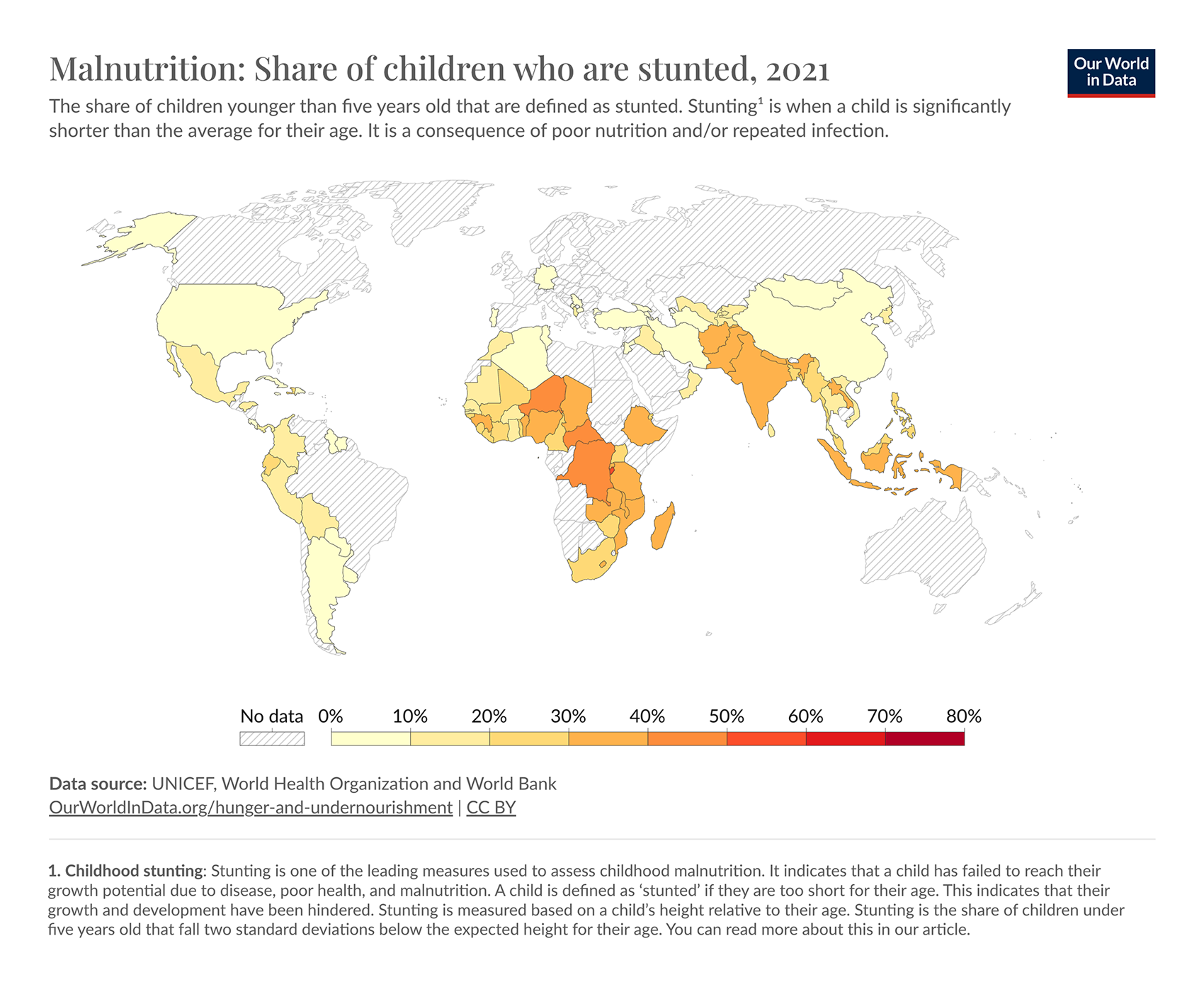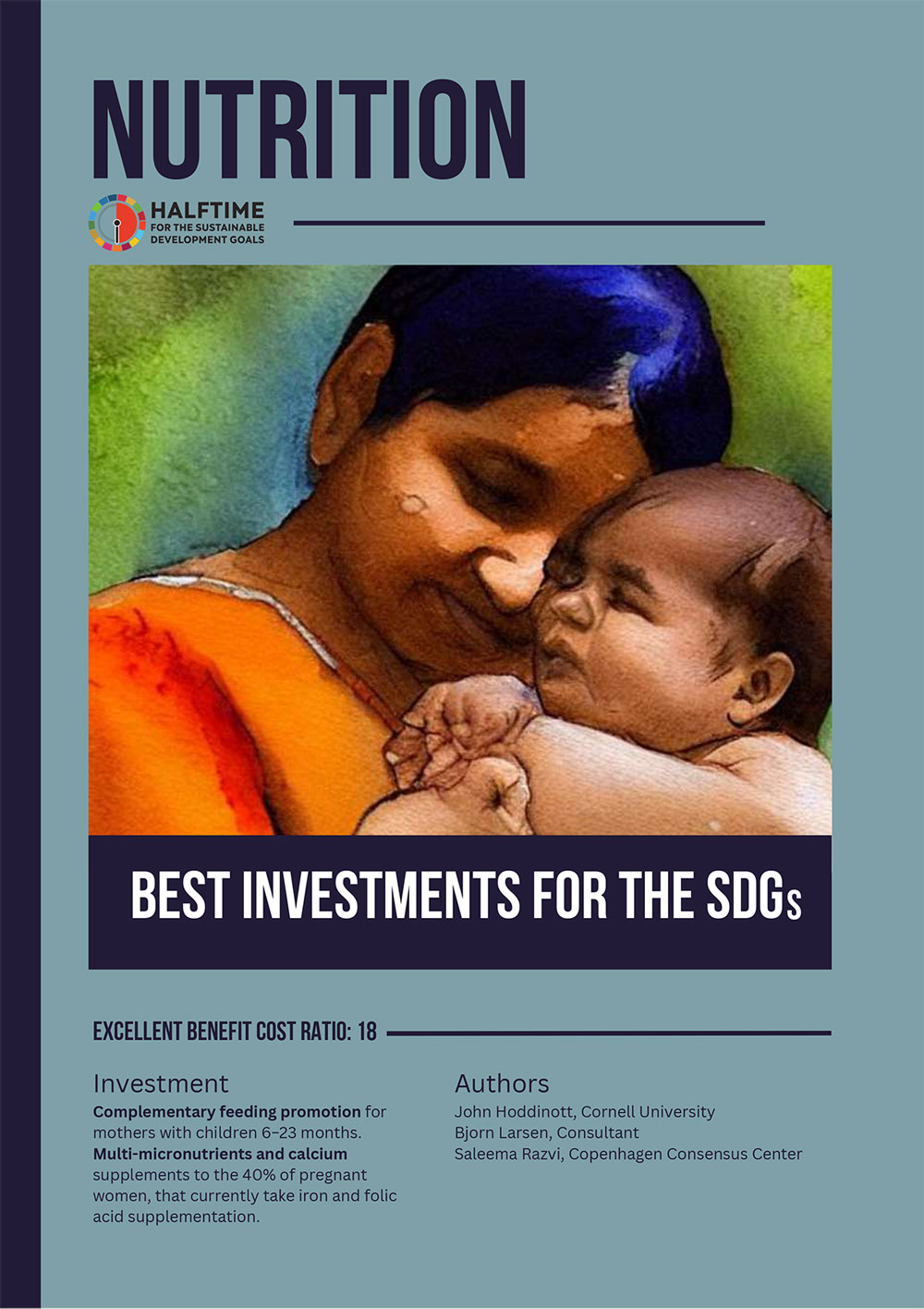What is the best investment to tackle childhood stunting and wasting?
keyboard_arrow_down
Undernutrition and micronutrient deficiencies are key drivers of infant and child mortality and impaired potential for millions of people.
The lives of nearly 200 million children globally are blighted by stunted growth or wasting
According to the World Health Organisation (WHO), in 2021, worldwide:
22% of children under five years old (149 million) were stunted
6.7% (45 million) were wasted

This burden falls disproportionately on low to middle income countries
Some countries in sub-Saharan Africa and parts of South Asia report more than 50% of children under five suffering from stunted growth.

Stunting has lifelong impacts for the individual and society

Being stunted in early childhood is associated with slower cognitive development and lower IQ.
The impact is like missing an entire year of schooling. 1
In later life, stunting in childhood can lower adult income by as much as 53%. 2
Reducing prevalence of stunting could increase economic productivity in Africa and Asia by 4-11%. 3
Copenhagen Consensus Centre finds that multi-micronutrient supplements (MMS) are a cost-effective intervention for pregnant women
The Centre calculates Benefit-Cost Ratios (BCR) for investments targeted at UN Sustainable Development Goals
– essentially, which investments will have the greatest impact for each dollar spent.
The MMS formula is a multiple micronutrient formulation containing 15 vitamins and minerals, including iron and folic acid. This formulation was specifically developed to improve pregnancy outcomes.
It is based on the United Nations International Multiple Micronutrient Antenatal Preparation (UNIMMAP). 4

| Nutrients | Amount |
| Vitamin A | 800 mcg RAE |
| Vitamin C | 70 mg |
| Vitamin D | 5 mcg (200 IU) |
| Vitamin E | 10 mg α-TE |
| Vitamin B1 | 1.4 mg |
| Vitamin B2 | 1.4 mg |
| Vitamin B3 | 18 mg NE |
| Vitamin B6 | 1.9 mg |
| Folic acid | 400 mcg |
| Vitamin B12 | 2.6 mcg |
| Iron | 30 mg |
| Iodine | 150 mcg |
| Zinc | 15 mg |
| Selenium | 65 mcg |
| Copper | 2 mg |
Supplementation pays for itself 37-fold
Replacing the Iron and Folic Acid (IFA, 60 mg Iron and 400 mcg Folic Acid) supplement usually given to pregnant women in low- and middle-income economies with a multi-micronutrient supplement (MMS), delivers 37.5 6 times more economic benefit than it costs.
Micronutrients, including vitamins and minerals are essential for good health and wellbeing throughout life. Pregnant women need up to 50% more micronutrients 7 to support healthy pregnancy and maintain their own health.
| Supplementation Intervention |
Annual Benefit (Millions US$) |
Annual cost (Millions US$) |
Benefit Cost Ratio |
| MMS for pregnant women (replacing IFA) | 3,162 | 84 | 37.5 |
| MMS and Ca for pregnant women (with maternal mortality reduction) | 7,171 | 300 | 23.9 |
Over
US$7 billion in potential annual benefit
In 2023, investment of just US$84 million could have delivered over US$3.1 billion in added benefit. 7
These economic benefits derive from reduction in stillbirths, preterm births and low birthweights.
Investing US$300 million to provide calcium supplements in addition to MMS would double the overall economic benefit to over US$7 billion per annum when related reductions in maternal mortality are considered.
The world is off-track to meet UN SDG 2 target 2 to end all forms of malnutrition
As an investment in the future, few options rival the cost-effective advantages of Multiple Micronutrient Supplementation (MMS) for pregnant women in low- and middle-income countries. It is a game-changer in the global fight against malnutrition.





